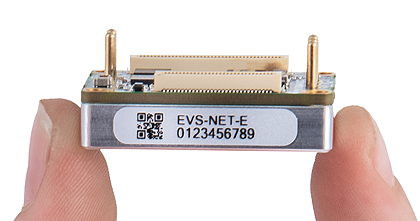EtherCat and CANopen versions of the drive deliver bus latencies of just one cycle, making them the fastest servodrives on the market, according to Ingenia. High-speed SPI bus communications is available for the EtherCat/CANopen multi-axis architectures. The drives have current loops running at 50kHz and velocity loops at 25kHz, for optimal motor performance.
Ingenia also claims that the drives offer best-in-class motion-control performance, efficiency and integration capabilities. The motion control software includes a configuration wizard and diagnostic functions.

The Everest S servodrive weighs 18g and is about 30% smaller than its predecessor
“We’re excited to introduce the Everest S to meet the growing demand for smaller, faster servodrives that provide more space for applications, and even better performance,” says Marc Vila, director of strategy and business development at US-based Celera Motion, which acquired Ingenia in 2019. “Our goal is to give product designers as much freedom and flexibility as possible – and the Everest S delivers that and more.”
The Everest S is said to include the best functions of other Everest servo drives and adds support for dual BiSS-C feedback. It combines 16-bit differential current and four configurable ranges, and has been designed to meet industrial functional safety standards to ensure safe operation.
The Everest S servodrives are is the latest release in Celera’s Summit series of drives, which also includes its Capitan and Denali series.
Celera Motion: Twitter LinkedIn Facebook

